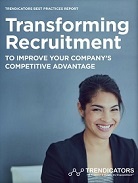-1.png?width=142&name=TEAMMATES%20into%20FANS%20thumbnail%20for%20blog%20%26%20email%20(1)-1.png)
 Super Bowl LIII has come and gone. For the past few weeks, there existed varying degrees of fanfare around the different elements that combine to make up Super Bowl Sunday. Then, on game day, cohorts congregated across the country for watch parties. Many tuned in solely for the commercials and half-time performances or tagged along with friends for the appetizers and camaraderie. Even those with no affinity for sports had the chance to gain something from the day by cheering on the competitors in Puppy Bowl XV!
Super Bowl LIII has come and gone. For the past few weeks, there existed varying degrees of fanfare around the different elements that combine to make up Super Bowl Sunday. Then, on game day, cohorts congregated across the country for watch parties. Many tuned in solely for the commercials and half-time performances or tagged along with friends for the appetizers and camaraderie. Even those with no affinity for sports had the chance to gain something from the day by cheering on the competitors in Puppy Bowl XV!
If we strip away all the pageantry and splendor of this annual event, what remains is a three-and-a-half-hour football game between two teams who each fought their way to this championship through a season of trials, triumphs and even the occasional controversial call. Ultimately, the outcome of this matchup matters first and foremost to each team’s players, coaches and staff, and secondly to the self-proclaimed number one fans.
The “team” analogy is thrown around often in the human resources sphere, with the development of many soft skills being attributed to the team sports that individuals play. Teamwork, time management, communication and discipline are among the characteristics sought after by talent recruiters everywhere, and they can often be traced back to youth sports in our formative years.
Most everyone today is on board with treating employees like team members, but what about encouraging them to become your organization’s number one fan as well? A top fan is more than someone who shows up on game day in team colors; they’re able to tell you random trivia like the fact that the Patriots won the American Football League’s very first pre-season game in 1960 or that the first player drafted for the Rams was Johnny Drake in 1937. Similarly, an employee who boasts this title for their organization will be able to recite their “home team’s” history, mission and values. They’ll proudly represent your brand and publicly acknowledge their loyalty.
How can leaders inspire team members to embrace the additional role of fan? Provide an exceptional employee experience by taking into consideration what matters most to them. Dr. Jack Wiley, Ph.D., Chief Scientific Officer at Engage2Excel, recently released a piece entitled Suggested Actions for Human Resources to Create a Better Employee Experience, which offers strategies that managers can implement to give employees what they really want from their organization: RESPECT.
Dr. Wiley’s RESPECT framework is derived from over three decades of extensive global research. It focuses on seven dimensions which are at the heart of the employee experience. Moreover, when steps are taken to improve each of these dimensions in the work environment, they contribute to a stronger performance by a more engaged workforce.
The seven dimensions of the RESPECT framework, as defined in Dr. Wiley’s book RESPECT: Delivering Results by Giving Employees What They Really Want, are:
Recognition: A pat on the back from managers and the organization at-large
Exciting Work: A job that’s challenging, interesting and fun
Security: Job security, whether that means for one year or 10
Pay: Fair compensation for a day’s work, and enough of it
Education and Career Growth: Opportunities to develop their skills and career
Conditions: A workplace that is comfortable physically and socially
Truth: Frank, honest and transparent leaders
In the upcoming weeks, each of these dimensions will be broken down and accompanied by tips and tools for incorporating them into the development of an unparalleled employee experience. Throughout this series, you’ll be presented with ways to cultivate buy-in from your team so they’re sporting company pride daily. Follow through with these tricks of the trade, and you just may find that you’re able to put more tallies in the “win” column for your organization.

.png)
